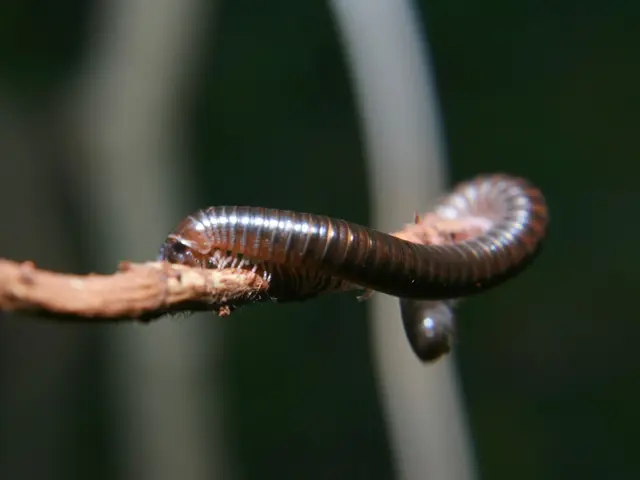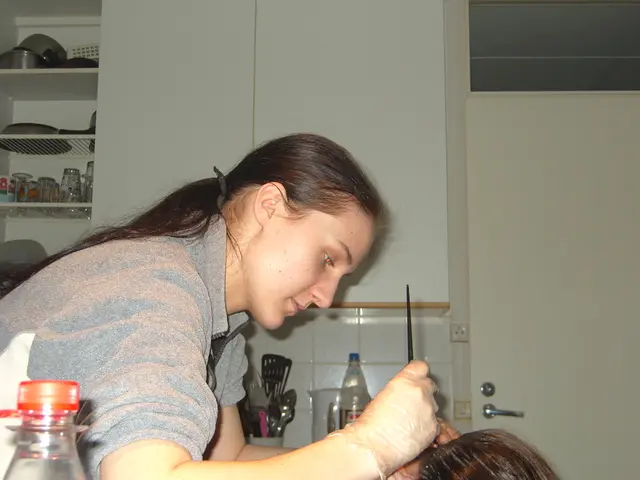Distinguishing between Age Spots and Skin Cancer: Identifying the Key Differences
Hey there! Let's dive into the world of skin health and learn the deets about age spots and skin cancer.
First off, both age spots and skin cancer can appear on sun-exposed areas like your face, hands, shoulders, and feet. Now, you might be thinking, "How do I tell the difference between these two?" Well buckle up, as I'm about to break it down for ya!
Here's what you should know about age spots:
- Also known as solar lentigines or liver spots, these are flat, smooth patches that appear darker than your surrounding skin.
- They develop due to an excess of melanin, a pigment that protects your skin from sun damage.
- Age spots are generally harmless, and they usually show up on light skin from middle age onward.
Now, let's talk about skin cancer:
- This is a type of cancer that can also appear similar to age spots but is more harmful and may spread to other parts of your body.
- Skin cancer happens when UV radiation or other environmental or genetic factors damage skin cells, causing them to mutate, grow, and spread at an accelerated rate.
- There are three main types of skin cancer: basal cell carcinoma, squamous cell carcinoma, and melanoma.
Another important thing to know is that actinic keratosis, a precancerous growth, can look like an age spot. This condition can potentially turn into skin cancer if left untreated. Always keep an eye on new or changing marks on your skin and consult a healthcare professional if you notice any potential signs of skin cancer.
Here's a quick rundown of symptoms for age spots and skin cancer:
Age spot symptoms
- Flat and smooth
- Yellow, brown, or gray
- Defined with clear borders
- Between a few millimeters or centimeters in size
- On sun-exposed areas
Skin cancer symptoms
- Irregular, blurred, or ragged edges
- Changing size, color, or shape
- Multiple colors on the same spot
- Red, purple, blue, or black or brown coloring
- Raised, red patches
- Pain, itching, oozing, or bleeding
- Crusty or scaly patches
- Raised edges that lower in the middle
Remember, if a mark on your skin changes in color, shape, size, or location, looks different from other marks on your skin, itches, crusts, or scabs over, or doesn't heal within 4 weeks, it's best to contact a doctor. Early detection can make skin cancer treatment easier and improve health outcomes.
Now, if you're wondering whether age spots can turn into cancer, don't worry – they cannot. Like I mentioned earlier, actinic keratosis is a precancerous growth that can appear similar to age spots but may turn into skin cancer if left untreated. If you're concerned about any marks on your skin or want more information, don't hesitate to consult a healthcare professional. They're there to help!
Stay sun-safe, my friends! 🌞✨
- Outside the realm of age spots, skin cancer, specifically melanoma, is another serious skin condition that requires medical attention, mostly occurring in seniors.
- If you're seeking skincare and health advice, it's essential to understand that dermatology, as a science, plays a crucial role in detecting and treating both age spots and skin cancer, as well as other skin conditions.
- The medical community also helps senior populations by educating them about the signs of skin cancer, including the differences between it and innocuous age spots, thus fostering improved health-and-wellness.
- Since both age spots and skin cancer emerge on sun-exposed areas, a good skin-care regimen should include protection from UV radiation, promoting overall skin health.
- Sadly, while age spots are mostly harmless, other skin cancers like basal cell carcinoma, squamous cell carcinoma, and melanoma can be more prevalent in certain medical-conditions that impact skin integrity, requiring ongoing vigilance and professional consultation.








